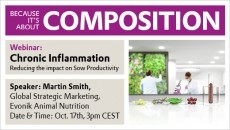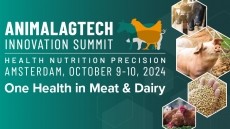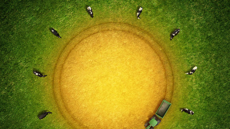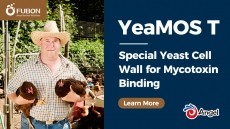Chelating propionic acid with calcium may support catfish growth, survival

A team of researchers at the Federal University of Santa Catarina (AQUOS) and with Agricultural Research and Rural Extension (EPAGRI) of Santa Catarina in Brazil explored the use of chelated minerals in the diets of farmed silver catfish facing a disease challenge.
The group published its work in the journal Aquaculture.
They concluded that propionic acid chelated to calcium 0.25% reduced feed conversion and increased gain weight, biomass and growth. Fish fed propionic acid chelated to calcium 0.25% survived 54% more that those fed propionic acid chelated to sodium 1%.
“The hypotheses of this study are: do the minerals calcium or sodium, chelated to propionic acid, have an influence on the health of native silver catfish, and, do they influence the zootechnical parameters and survival of fish after exposure to A. hydrophila?” the researchers said. “The aim of this study was to evaluate the effects of calcium and sodium as a chelant to propionic acid on the growth performance and hemato-immunological parameters of native silver catfish R. quelen fed for 60 days with a supplemented diet, in addition to evaluating survival and immunological parameters after exposure to A. hydrophila.”
During the feeding trial and disease challenge, the researchers found that fish receiving the supplemental calcium (Ca) propionate at 0.25% had the best survival rate following pathogen exposure along with weight gain, biomass and specific growth rate prior to disease exposure.
“It is concluded that for silver catfish R. quelen, the chelator of the propionic acid positively influences the zootechnical and health parameters,” they added. “The most suitable additive for this species is the calcium propionate at the concentration of 0.25%.”
Why calcium or sodium chelated supplementation?
Silver catfish is a farmed fish well accepted in the market and more prominent than other catfish species raised in southern Brazil, the researchers said. Of the 39,860 tons of continental fish raised in 2013, about 743.9 tons was silver catfish.
However, fish production remains vulnerable to infectious disease that can generate production losses, they said. Among the diseases noted in freshwater fish is aeromoniosis, which is caused by Aeromonas hydrophila.
Treating disease at the farm level can be challenging and expensive, they said. Most bacterial diseases are treated with antibiotics but incorrect use can pose risks for human health, promote selection of bacteria resistant to the antimicrobial, leave traces in fish and generate environmental pollution.
Organic acids and salts have been suggested as possible alternatives and prophylactic options, the researchers said.
“The most abundant group [of organic acids] is the carboxylic acid, which presents the carboxyl functional group (COOH),” they said. “When chelated to a mineral, the organic acids are transformed into salts of organic acids that are more stable and easier to handle.”
Past research exploring the use of organic acid salts with aquatic species showed that the additives might improve growth, boost nutritional efficiency, change intestinal microbiota and limit bacterial pathogens, they said. The feed additives also have found use in poultry and swine production.
Commonly available salts of organic acids include propionic acid, formic acid and lactic acid, they said.
“Studies with Ca-propionate and Ca lactate supplemented at 0.5, 1.0, and 1.5% in the diet of Nile tilapia Oreochromis niloticus have demonstrated significant enhancement in weight gain, body length, and specific growth rate when compared with unsupplemented fish (Hassaan et al., 2014),” the researchers said. “Similar results were reported by Silva et al. (2016) for shrimp fed with feed supplemented with propionate and sodium butyrate at 0.5, 1.0, and 2% in the diet, finding higher final weight gain, higher weekly weight gain, higher agglutination titer and altered intestinal microbiota.”
However, the mineral used to connect organic acids and generate a salt of an organic acid also can alter its effects, they said. The chelant can influence how permeable an organic acid salt can be to the mucosa membrane or improve mineral absorption.
“Calcium (Ca+) is strongly related to the formation of heavy tissues, such as spines and scales, can promote blood coagulation, aid the transmission of nervous impulses, and cofactor in enzymatic reactions, while sodium (Na+) is important to the osmoregulation process,” they said. “However, studies observing the effects of chelant minerals on organic acids in silver catfish are rare.”
Methods and materials
During the feeding study, 225 fish were given one of five trial diets for a period of 60 days, the researchers said. Diet additives were organic propionic acid chelated with either sodium or calcium added at varying concentrations.
The diets included a control on a non-supplemented diet along with a series of supplemented diets including a diet with calcium-propionate at 0.25% (Ca0.25%), calcium-propionate at 1% (Ca1%), sodium-propionate at 0.25% (Na0.25%) or sodium-propionate at 1% (Na1%), they said. Fish were acclimated to the facility for 15 days.
Feeding behaviors were observed, and weight gain (WG), specific growth rate (SGR), feed conversion (FC) were calculated along with survival rate, they said.
After 60 days, a selection of fish was sampled to determine hemato-immunological parameters, and blood samples were taken for analysis, the researchers said. Immunological analyses also were made before and following the disease challenge.
In the disease challenge, about 105 fish remaining in the trial were exposed to the pathogenic bacteria A. hydrophila and watched for 144 hours, they said.
Results
Overall, fish did not display any change in feeding behavior stemming from the test diets, the researchers said. Fish getting diets supplemented with Ca at 0.25% had the best weight gain, biomass and specific growth rate, the researchers said. Fish survival during the feed trial was not altered by diet.
“These fish have presented a final biomass of 68%, WG 42%, SGR 15%, and a final biomass 44% higher than unsupplemented fish,” they added of the fish on the Ca 0.25% diet. “Moreover, FC of fish fed Ca 0.25% was reduced by 27% in relation to unsupplemented fish.”
Prior to disease challenge, fish getting the Na supplement at 1% had high leukocytosis and lymphocytosis compared to fish in the control group and those receiving the Na additive at 0.25%, they said. However, fish on the 0.25% Na diet had higher hematocrit percentage than those on the Ca 0.25% diet.
Following exposure, total plasmatic protein declined and lysozyme and agglutinating titer increased, except for fish on the 0.25% Na did, which saw a drop in lysozyme concentrations, they said.
“Regarding the survival percentage after pathogen exposure, the Ca 0.25% group showed higher survival rates than the Na 1% group 96 h after exposure,” they said. “Ca 0.25% showed 54% greater survival rates than Na 1%. In contrast, fish fed with Na 1% presented the worst mortality 96 h after exposure.”
Source: Aquaculture
Title: Can the minerals calcium and sodium, chelated to propionic acid, influence the health and zootechnical parameters of native silver catfish Rhamdia quelen?
Authors: S. Pereira, H. Oliveira G. Jesus, K. Addam, B. Silva, M. Yamashita, N. Lehmann, M. Martins, J. Mouriño
DOI: published online before print: doi.org/10.1016/j.aquaculture.2018.07.016


















